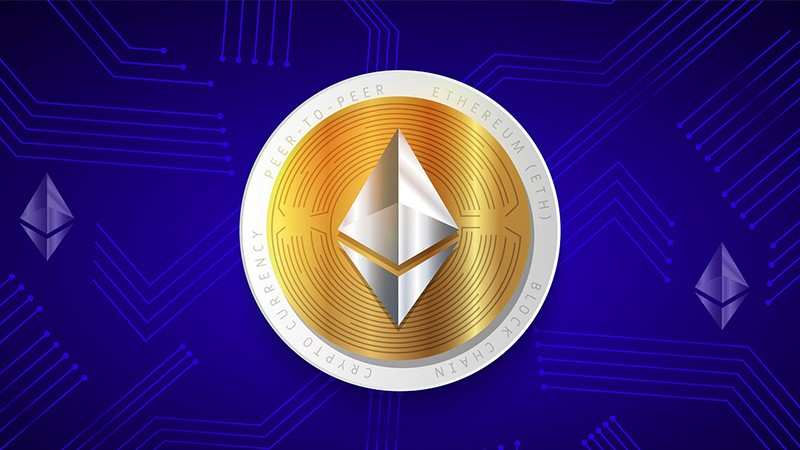The much talked about Polygon MATIC cryptocurrency platform is directed and discussed to provide a thorough guide to this relatively new kid on the block
The biggest crypto news story for quite a while happened last week when The Merge was finally completed. The much-heralded Merge between Ethernet's Mainnet and the Beacon proof-of-stake system took place on Thursday, 15th September. Following much criticism from the green lobby, Ethereum decided to change from the energy-expensive proof of work system to an energy-conscious proof of stake.
For someone to perform a transaction with a proof of work system, they must solve highly complicated mathematical problems using enormous quantities and computing power. For this reason, proof of work uses a lot of electricity. As a result, it has always been a significant concern for many, resulting in a lower take-up than could be expected.

By converting to proof of stake, 'validators' replace the crypto 'miners.' The validators invest their cryptocurrency as collateral to create the needed blocks on the blockchain. These validators are chosen by random using an algorithm. The chance of being selected increases for those who invest more cryptocurrency. Therefore, this means that people pool their resources to increase their chances. The rewards are then divided up depending on each individual investment.
The completion of The Merge happened as expected, but ETH dropped almost immediately. In the first 24 hours, Ethereum's price plummeted from $1,639 to $1,317, a drop of over 8%. It continued to fall a further 9%, resulting in an overall decrease in ETH value by 17%. At the time of writing, Ethereum sits at below $1,300.
Other cryptocurrencies also felt the effects of the Merge, with Bitcoin dropping 7% to a value just below $20,000. Likewise, Avalanche decreased to $18.06, and Polkadot to $6.87. These two cryptocurrencies are known as "Ethereum killers," That is to say, layer-1 blockchains with high-functionality smart contracts.

Gary Gensler partly exacerbated this collapse. The Securities and Exchange Commission Chairman, quoted in the Wall Street Journal, said that any cryptocurrencies allowing holders to validate Crypto using proof of stake could be classified as a security, using the Howey Test. Gensler continually regards only Bitcoin as a commodity in the legal sense. He believes that because Ethereum’s "validators" only now need to stake a minimum of 32 ETH to have a shot at the reward, this classifies the currency as a security.
Not all regulators agree with the stance held by Gensler. Rostin Benham, head of the Commodities and Futures Trading Commission (CFTC), indicates that Ethereum is indeed more a commodity than a security. U.S. Senators Kirsten Gillibrand (D-NY) and Cynthia Lummis (R-WY) are currently sponsoring a bill called "The Responsible Financial Innovation Act," which will hopefully clarify the distinctions.
At the same time as the Merge implementation, Cardano founder Charles Hoskinson announced that the Vasil hard fork is coming soon, saying it would happen "sometime in September." As a result, the Merge has somewhat overshadowed Cardano's upgrade.
SmartBlock's director Mark Fidelman said, The Ethereum Merge has impacted the price of Cardano because the Merge is going to take some of the things that Cardano does and make them better and faster. However, I think people are generally bearish on Cardano just because of the [current] contrast between Ethereum and Cardano.

Solana's chief operating officer Raj Gokal was more bullish. He sees The Merge as a positive and the start of blockchain's expansion on a broader scale. He stated, "It's one step for Ethereum in a long road map toward having the type of scalability that Solana has today." Adding "We want to see the Merge succeed. It's good for onlookers to the crypto industry to see big upgrades release, and be successful."
The Howey Test is essential when looking at blockchain and digital currencies. It determines which ones qualify as "investment contracts" and are subject to United States securities laws. To qualify as an investment contract, there needs to be an "investment of money in a common enterprise with a reasonable expectation of profits to be derived from the efforts of others."
While governments and banking institutions are keen to introduce regulations to the crypto world, many investors are not keen on the idea. This fear of regulation is partly causing the lack of confidence at the moment. As a result, crypto is seen as the "wild west" of the financial world.
It was always going to be a bumpy ride in the weeks and months following The Merge. Considerable changes in any banking situation lead to uncertainty, which is rarely positive. However, many experts see this as expected and merely a bump in the road toward the future of cryptocurrencies. So there is still plenty at which to be optimistic.
As always, please do not take our articles as investment advice. We would always encourage readers to do as much research as possible. There is plenty of material out there to read. However, we ask that you follow us on Twitter to get updates, weekly news bulletins, guides, and much more.
The much talked about Polygon MATIC cryptocurrency platform is directed and discussed to provide a thorough guide to this relatively new kid on the block
The ultimate guide to Bitcoin, its place in the cryptocurrency world, and how you can get involved should you wish. A comprehensive look at Bitcoin.